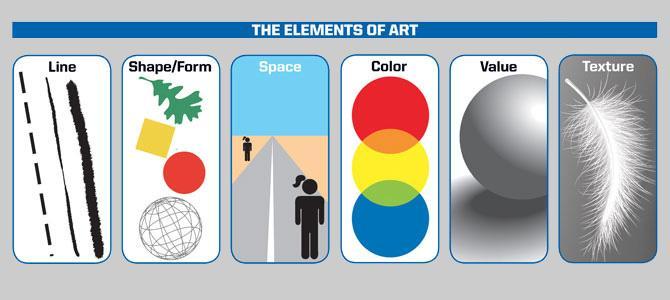Elements and Principles of Design
The ELEMENTS OF DESIGN are most important when creating art.
LINE
A line is a long narrow mark that spans a distance between two points:
straight, curved, zig-zag, dotted, and more.
straight, curved, zig-zag, dotted, and more.
SHAPE
Shape refers to a 2-dimensional contour or outline. Shapes could be geometrical or organic.
The geometrical shape is a triangle, square, circle, oval, rectangle, and more.
Organic shapes are irregular shapes, found in nature (such as a leaf, clouds, and more)
The geometrical shape is a triangle, square, circle, oval, rectangle, and more.
Organic shapes are irregular shapes, found in nature (such as a leaf, clouds, and more)
FORM
A form is a three-dimensional shape:
cube, pyramid, cylinder, cone, and more.
cube, pyramid, cylinder, cone, and more.
SPACE
Space includes the foreground, middle ground, and background. It refers to the distances around and between things, called Negative Space, and they are occupied by the objects called Positive Space. It also creates the illusion of depth in your artwork.
COLOR
Also called Hue. Colors are primary, secondary, and more.
VALUE
Value, in art, is the lightness or darkness of a color. Value is also called shade or a tint.
TEXTURE
The texture is the surface quality - rough, smooth, soft, hard, glossy, etc. Textures can be tactile (how it feels) or visual (how it looks).
PRINCIPLES OF DESIGN are how we use the Elements of Design.

